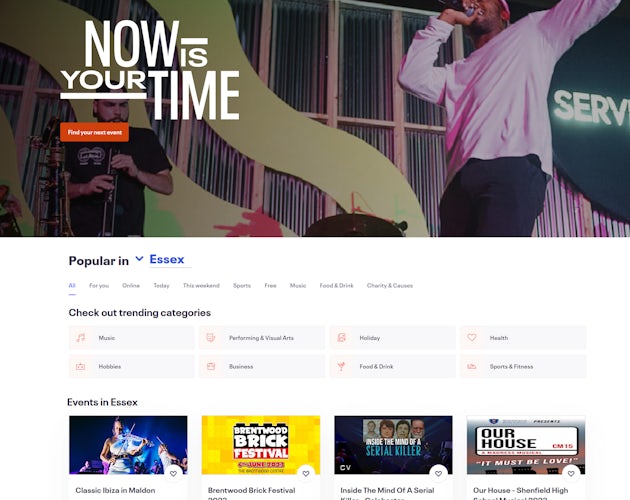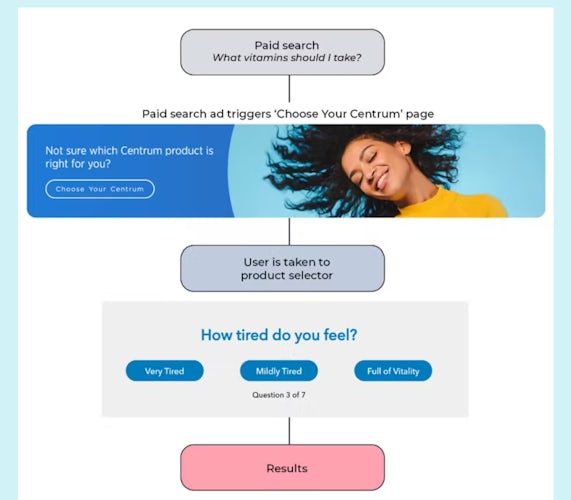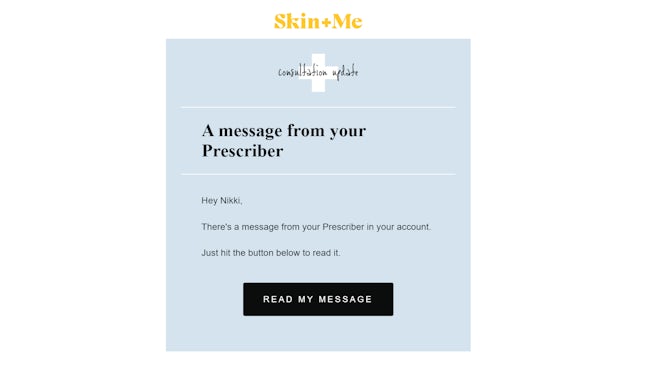According to research by McKinsey, 76% of consumers say that personalised communication has been a key factor in prompting their consideration of a brand, with 78% indicating they are more likely to make repeat purchases from a brand that delivers on this.
However, there is certainly no one-size-fits-all approach to personalisation, and neither is it a guaranteed fast-track to success. In Econsultancy’s expert predictions for 2023, Parry Malm stated that “you don’t need to, and shouldn’t, personalise most things.”
Throughout the customer journey, from awareness to conversion and loyalty, opportunities exist to deliver the right message at the right time and in the right channel to help move someone further down the funnel.
Using Econsultancy’s Personalisation Best Practice Guide, let’s take a look at how to deliver personalisation at key stages.
Training
Econsultancy offers CX training, including the elearning plan, Mapping the Customer Journey.
Eventbrite drives awareness on the homepage via contextual location data
Personalisation during the awareness stage is most likely to be used in ad targeting and programmatic buying, along with contextual targeting where customers can be targeted based on their known characteristics or interests.
Contextual data, for example, can be used to customise a website homepage with relevant content such as to show products related to what the weather is in a particular location, or to show venues or events relevant to where someone lives. This enables marketers to deliver a more personalised experience without really knowing the visitor.
Eventbrite does this on its homepage, tailoring content to the individual’s location in order to pique interest and drive click-throughs.

Centrum helps focus consideration with product selector tool
As the customer moves through the funnel to the consideration stage, marketers should shape messaging to hone in on the customer’s needs or desires. For retail brands, content that answers the customer’s questions or concerns about a specific product, or helps them choose the product that’s right for them, can be particularly effective.
Haleon does this for its Centrum vitamin brand, helping customers who may be in the consideration stage – meaning they might want to buy a multivitamin, but are not fixed upon a specific brand or product – by presenting them with an interactive quiz to help guide them through the products.

“This is a short quiz and asks them seven questions to find out a bit more about them as a person, their lifestyle, and how they might be feeling at the moment. Then we can recommend the most appropriate product, which is based on an algorithm that sits behind the selector, and perhaps a food plan or nutritional article as additional content,” James Sharman, Northern Europe Performance and Content Marketing Lead at Haleon, told Econsultancy.
The result is that the customer feels like their needs are being met, which helps to drive them further along the customer funnel to a potential purchase.
Shiseido uses propensity modelling to cross-sell additional purchases
Customers in the conversion stage of the funnel can be effectively targeted based on behavioural data, which stems from how they, or customers like them, have already interacted with a brand or ecommerce site.
Propensity modelling – which aims to predict the likelihood of conversion through the analysis of past behaviours – is particularly helpful when it comes to cross-selling or up-selling additional products.
Juliana Chu, Vice President of Digital and Ecommerce Asia Pacific for Shiseido told Econsultancy how the brand often relies on customer data, ranging from income to past purchases, to gauge whether they might be in the market for a different product. “We can then deliver some personalised content, maybe a voucher for trying out our night-time routine, or some more interactive or interesting information on the night-time routine,” she explained. “It’s very powerful to have these tools in place for personalised media targeting. They enable us to reach new consumers to drive them to the website, as well as loyal consumers who are only buying one part of the portfolio but not the other.”
Shiseido also uses data analysis to determine if or when customers are more likely to open email, which could also have an impact on conversions.
“We then use predictive analytics to predict when is a good time to send out what kind of content to which customer segments. All these factors are classified as personalisation to me and there are tools available which help us with RFM modelling so that we can understand more about consumers’ purchasing behaviour,” explained Chu.
Skin + Me incentivises loyalty with personalised products & messaging
Customers can be engaged through personalisation in multiple ways after the point of purchase, ranging from loyalty schemes or discounts to special offers and incentives to review a product. Personalised messaging, in the form of newsletters or email content, can also be effective, and particularly when it offers additional value related to the core product.
Skin + Me – a customised skincare brand that prescribes monthly routines based on individual need’s – keeps customers in the loop with personalised messages and ‘consultation updates’ to ensure that customers remain happy with their product and engaged with the brand each month.

Other email content includes a monthly newsletter that includes personalised discounts (designed to cross-sell) as well as educational content related to the individual’s skincare plan. In doing so, Skin + Me aims to maintain value for its customers, helping the brand to build deeper relationships, and to drive loyalty and retention.
To learn more about delivering personalisation, read Econsultancy’s Personalisation Best Practice Guide.

Comments